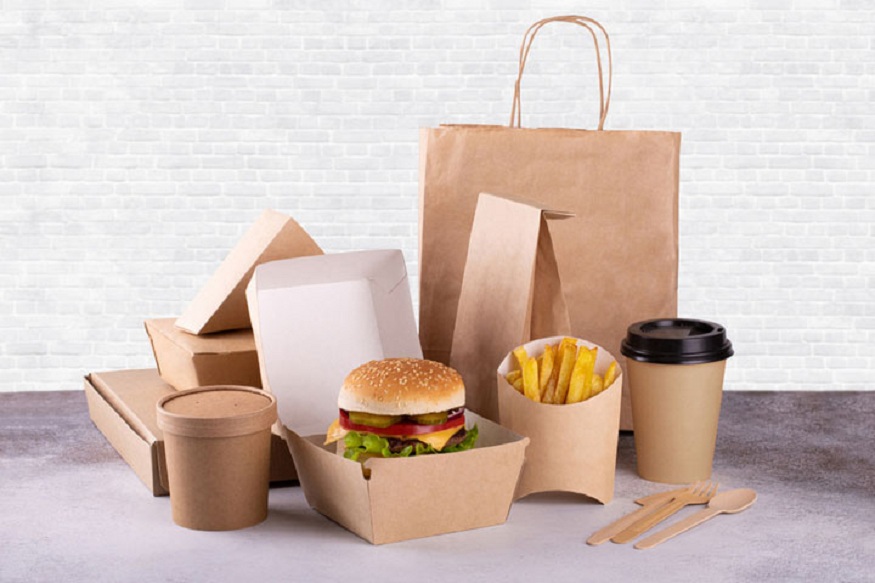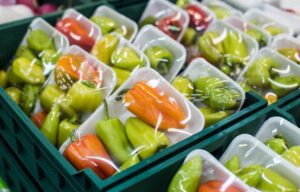Compostable food packaging: everything you need to know
In a world facing unprecedented environmental challenges, it is essential to understand the benefits, limitations, and impact of these products on our planet.
Whether you’re a business looking to reduce your carbon footprint or a foodservice professional looking for more sustainable solutions, this article will provide you with everything you need to know about compostable packaging.
Compostable packaging, made from materials such as corn starch or sugar cane pulp, offers an alternative to conventional plastic.
Their decomposition using micro-organisms under appropriate composting conditions is a key element of their “eco-responsible” image.
But what exactly is compostable packaging , and what is the difference compared to traditional plastic packaging?
First of all, what is composting?
Understanding what composting is is essential to fully understanding the importance of compostable food packaging.
Composting is a natural process of decomposition of organic matter by microorganisms, becoming a nutrient-rich soil amendment for plants.
Compostable packaging, made from materials such as corn starch or sugar cane pulp, is designed to follow this same process.
The big difference from traditional plastics is their ability to break down into natural elements , eliminating the problem of plastic pollution.
Compostable packaging offers an eco-friendly solution to an increasingly pressing problem: the overabundance of single-use plastics invading our environment.
The benefit of compostable packaging lies in its ability to transform into beneficial nutrients for the earth, thus promoting a natural cycle.
For companies, the strategy of transitioning to these products is a crucial step in reducing their carbon footprint and meeting consumers’ growing expectations for sustainable development.
The benefits are multiple, from reducing plastic pollution to promoting a nature-friendly brand image. However, it should be noted that the success of this transition depends on adequate composting conditions , customer awareness and the establishment of effective collection and recycling systems.
By understanding the composting process, businesses and consumers can help preserve our planet, one package at a time.
definition of composting
Composting is an essential ecological process that allows for the natural breakdown of organic matter into soil nutrients. It becomes particularly relevant when it comes to compostable food packaging.
This process is part of a transition strategy towards more environmentally friendly products, offering numerous benefits, from reducing pollution to promoting a nature-friendly brand image.
The different types of compost
There are several types of composting, each tailored to specific needs, particularly when it comes to compostable food packaging. These composting methods vary depending on different conditions, requirements and materials used.
Compostable packaging, made from corn, sugar cane or potato starch, falls into these various composting categories:
Home composting : Home composting is suitable for individuals who wish to reduce their organic waste. Compostable packaging, such as lids or bags, can be added to the home composter, where microorganisms break down the material into a nutrient-rich amendment for the garden.
Industrial composting : Businesses and professionals often use industrial composting facilities to manage large quantities of organic waste. Compostable packaging can be integrated into these systems to reduce their environmental impact.
Foodservice composting : Restaurants and foodservice establishments can adopt compostable packaging for takeout, reducing pollution from single-use plastics.
How can i compost my food packaging?
arrangement of different objects put in trash
To compost your compostable food packaging in an eco-responsible way, it is essential to follow a few key steps. First of all, make sure that your packaging carries an “ok compost home” certification or equivalent, which guarantees their compostability.
Before composting, make sure the containers are free of food residue . You can also tear or break them into smaller pieces to make decomposition easier. If you have a home composter, place them with other organic waste.
Be sure to maintain proper composting conditions , including temperature and humidity. For larger quantities of compostable packaging, find out about collection programs in your area, or explore industrial composting options.
Educating consumers on the correct way to compost these products is also essential to maximize the benefits of this ecological solution, reduce plastic pollution, and contribute to the preservation of our planet.
The differences between biodegradable packaging and compostable packaging
The fundamental differences between biodegradable packaging and compostable packaging lie in their decomposition process and their impact on the environment.
Biodegradable packaging decomposes into natural elements, but without a specified time frame , which can take years or even decades under certain conditions.
In contrast, compostable packaging is designed to decompose in a relatively short time , usually in a composting environment, through the action of microorganisms.
Additionally, compostable packaging leaves behind a nutrient-rich end product for the soil, while biodegradable packaging may not leave behind any useful material.
So, although both types of packaging are designed to reduce plastic pollution, compostable packaging offers a more targeted and sustainable solution to help preserve our planet.
Biodegradable packaging is not necessarily compostable
It is important to note that biodegradable packaging does not necessarily mean it is compostable. Biodegradable packaging can decompose into natural elements, but without specification of time , and under various conditions, sometimes much longer than those of compostable packaging.
Often made from corn starch or other organic materials, they can be an attractive choice for certain sectors , particularly in terms of hygiene and product packaging. However, their cost, ordering in large quantities, and unpredictable breakdown may be points of consideration.
Conclusion
In conclusion, the move towards more environmentally friendly packaging, whether compostable or biodegradable, is a crucial point in the search for sustainable solutions to reduce plastic pollution and preserve our planet.
While compostable packaging stands out for its ability to quickly turn into a valuable soil amendment, biodegradable packaging also offers benefits, although its decomposition time may vary.














Post Comment
You must be logged in to post a comment.